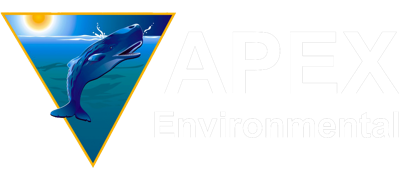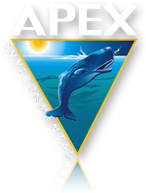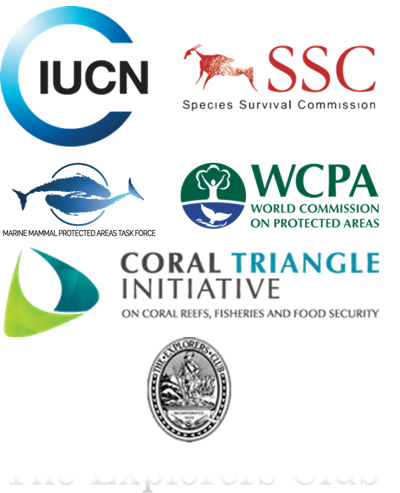Solomon Islands
The Solomon Islands – The stunning, remote, mega-diverse “Hapi Isles” that time forgot.
The official tourism site of the Solomon Islands puts it this way, and righty so:
“Tucked away in the South Pacific, the Solomon Islands are a little known, unspoilt paradise. They offer a chance to explore islands of exotic beauty, a unique blend of cultures, a fascinating history and a warm, tropical Pacific Ocean welcome.
The Solomon’s offer a taste of a different world. Almost 1000 green islands lie scattered within a dazzling sea. Visit places where you could believe you’re the first person to ever slip into the clear blue waters and set foot on the warm sand.
“Uncover the mysteries…Take a moment to reveal the beauty and richness of the Solomon’s.”
The many islands that make up the Solomon’s are grouped into nine regions or provinces. Each region has their own particular characteristics and intriguing customs. The population is approximately 950.000 people. Honiara, situated on Guadalcanal, is the capital city.
The early European explorers:
In 1568, the Spanish navigator Álvaro de Mendaña was the first European to encounter the Solomon Islands archipelago. He named his “discovery” the Islas Salomón after the biblical King Solomon. The islands were probably given this name in the belief (now proven incorrect) that they contained vast amounts of gold and other great riches.
South Pacific battleground:
Fast forward almost 400 years of splendid isolation, and the Solomon’s suddenly found itself at the forefront of World War Two’s “Pacific Theatre” – a military name that belies the hardships and horror that would take place in these waters, as this was largely a naval campaign.
The Battle of Guadalcanal became one of the most important and bloody campaigns fought in the Pacific War as the Allies began to repulse Japanese expansion, and only recently, prominent WW2 historians (such as John Prados’ Islands of Destiny), recognize the Solomon Islands as the true turning point in the Pacific (and not the Battle of Midway, after which the Japanese quickly regained strength).
Nowadays, the Solomon’s have largely returned to their relaxed and splendid isolation. But at numerous anchorages, dive and snorkel sites we visit – and honour – during our Expedition, you can experience the WW2 wrecks of planes, transport vehicles, dumped supplies and sunken ships, now oddly transformed to colourful artificial reefs teaming with marine life, as they bear witness to this violent period in the world’s history.
The “Hapi Isles” that time forgot.
The Solomon’s is indeed a nation like no other, with a unique culture and stunning jungle-clad islands full of natural splendour and deserted beaches, with intense historical WW2 sites and exceptional marine life, including mega-diverse coral reefs and abundant whales and dolphins.
The main island groups that our cetacean program focuses on includes the so-called Western Provinces:
- Guadalcanal
- Malaita
- San Cristobel
- San Isabel
- Choiseul
- New Georgia
- And numerous small outlying islands such as the Russell’s and Mary Island (Mborokua).
The eastern Santa Cruz Islands are amongst the most remote in the South Pacific, with largely unexplored marine habitats. Because hardly anything is known about the whales and dolphins in this part of the Solomon’s, Santa Cruz remains a high priority for additional marine mammal surveys.
Source for Solomon island introduction:
http://www.visitsolomons.com.sb/
https://en.wikipedia.org/wiki/Solomon_Islands
Marine mammals in the Solomon Islands
This section is adapted from
Kahn, B. 2006. Oceanic Cetaceans and Associated Habitats in the Western Solomon Islands. In: Green, A., P. Lokani, W. Atu, P. Ramohia, P. Thomas and J. Almany (eds.) 2006. Solomon Islands Marine Assessment: Technical Report of Marine Survey – May 13 to June 17, 2004. The Nature Conservancy – Pacific Island Countries Report No. 1/06. pp 445-515. http://conserveonline.org/workspaces/pacific.island.countries.publications/SIMAReport
Why not participate in this remote and ground-breaking cetacean conservation project?
Join us on a Marine Mammal Conservation Expedition in the Solomon Islands!
Links
The limited scientific literature and anecdotal records suggest that cetaceans are relatively frequently observed in Solomon Island waters. Based on combined sighting information reported for the Solomon Islands, Papua New Guinea, wider Melanesia and eastern Indonesia, it is likely that over 30 species of whales and dolphins inhabit the waters of the Solomon Island.
However, the Solomon Islands do not have active long-term cetacean survey, research or conservation programs at this stage. Despite the numerous and major advances in marine science in tropical Australasia, the lack of information on the ecology and conservation status of whales and dolphins – and their associated coastal and offshore habitats – is one of the largest ‘knowledge gaps’ concerning the marine biology of this exceptionally diverse part of the world.
This is especially so for the waters of the Solomon Islands. According to the IUCN, all of Solomon Islands whale and dolphin species (and populations) are data-deficient, and to variable degrees vulnerable to the region’s coastal and marine resource use.
A preliminary cetacean species list for the Solomon Islands would include resident and migratory species; several rare, vulnerable and/or endangered whale species – including sperm, baleen and beaked whales; as well as numerous coastal and oceanic dolphins (Fam. Physeteridae, Kogiidae, Balaenopteridae, Ziphiidae and Delphinidae respectively).
It seems likely that cetaceans may be an important component of coastal and oceanic ecosystems in the Solomon Islands. Examples of known cetacean habitats within our Expedition area include migratory corridor sites of regional significance; coastal hotspots for whales and dolphins, local communities with traditional dolphin drive fisheries.
To better understand Solomon Islands (SI) cetaceans we need to obtain information about their
- Diversity and distribution,
- Life histories – including their feeding and breeding habits,
- Long and short term movements – as well as
- Current and emerging threats.
In order to conserve the (often vulnerable, endangered and highly migratory) whale and dolphin species of the SI we must improve our understanding on the locations of their critical habitats, how they use each habitat, when they travel between them and the routes they take. This type of information is difficult and costly to obtain for most marine mammals.
Hence, the Solomon Islands Marine Mammal Expedition presents a valuable opportunity to make a significant contribution to our understanding on the diverse community of cetaceans in these waters.
Overview of our Expeditions’ goals and activities – in addition to world-class diving and snorkeling showcasing some of the best reef ecosystems the Coral Triangle has to offer.
- To conduct a visual and acoustic survey on Solomon Island whale and dolphin species diversity, distribution, relative abundance and their associated habitats (near shore, yet deep-water), in close collaboration with relevant government agencies.
- To canvass community knowledge on local cetacean sighting patterns, strandings and cetaceans’ role in cultural heritage and folklore.
- To conduct an on-board capacity building program on cetaceans for local scientists and marine conservationists.
- To assist with the identification of migratory corridors of national and regional importance, as well as other critical habitats.
- To strengthen national conservation policy for large cetaceans and marine bio-diversity in general, including support for (new) Networks of Marine Protected Areas.
- To evaluate the potential for responsible (sperm) whale watch activities.
- To develop best practices for in-water encounters with large cetaceans such as pilot and sperm whales, numerous oceanic dolphin species and, on rare occasions, orcas.




